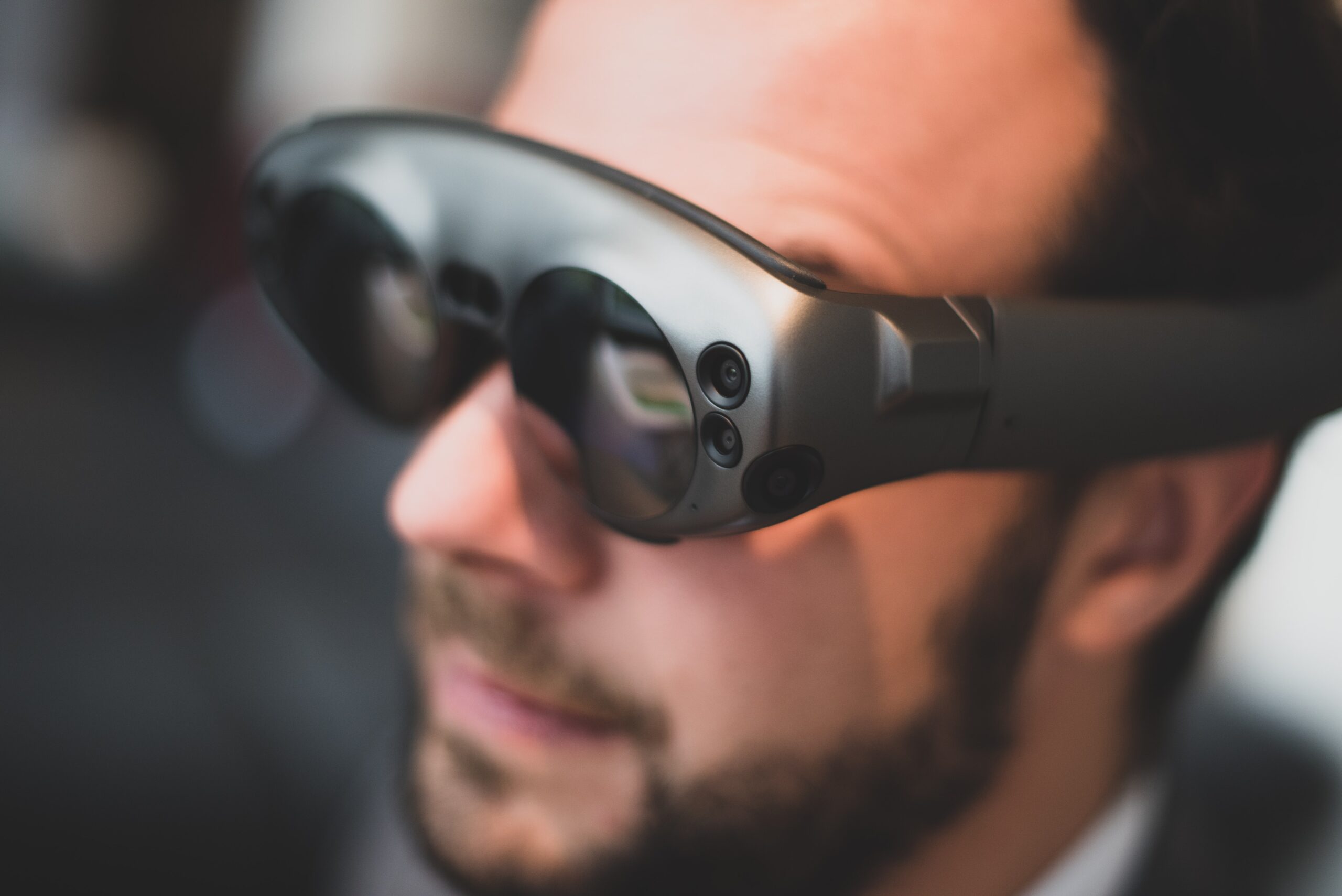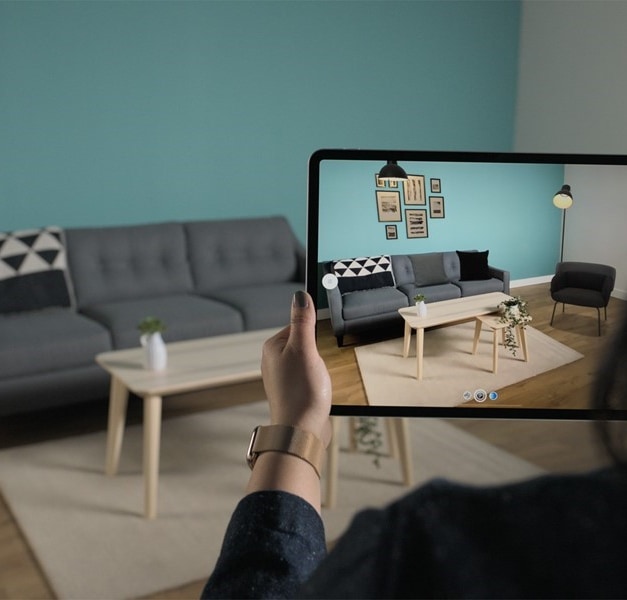The global pandemic has induced a shift in consumer behavior. More consumers are now exploring online shopping than ever before and prefer it over the traditional in-store shopping experience.
This shift in behavior has sent retailers scrambling to innovate and adopt technological solutions that enhance customer experience. One of the most potent amongst these solutions is augmented reality (AR).
So, what does AR do? Simply put, AR technology facilitates the three-dimensional visualization of digital objects in any given physical space. In retail, AR allows customers to interact with products and customize them before purchasing.
When it comes to retail, AR is a tool that is not only likely to survive in a post-pandemic world but thrive in it. The digital commerce industry recognizes what the future holds and has even coined the term ‘AR commerce’ to refer to online shopping that involves the use of AR technology.
What AR brings to the table
Even in its infancy, augmented reality has made many, including retailers, stand up and take notice of the technology that transforms virtual 2D objects to 3D and seamlessly inserts them into a physical space.
Today, AR is already enhancing shopping experiences and is delivering results above and beyond what retailers have set out to achieve. Here’s what AR brings to the table in the current landscape.
AR delivers an ‘augmented’ customer experience
For customers, AR completely transforms the in-store and online shopping experience. Through AR, customers can get a true-to-life understanding of products and ‘tangibly’ interact with them. This is why 66 percent of people say they are interested in using AR for help when shopping. By enabling customers to explore 3D models of products, AR helps build trust, and improves the decision-making process.
Not only can customers visualize products, they can also explore customizations and select the right products based on their preferences. This plays into the hands of ecommerce retailers leveraging AR, as 71 percent of consumers expect brands to deliver personalized experiences.
When compared with traditional online shopping, AR offers a richer shopping experience to customers by blending virtual 3D models with the physical world. AR functionalities like virtual showrooms allow shoppers to explore and make purchases without leaving the comfort of their homes.
Read Extended Reality (XR) How It is Different from AR and VR
AR delivers improved ROI to retailers
AR can deliver improved ROI to retailers by increasing conversions by 90 percent. In fact, even in-store implementation of AR can increase conversions by 94 percent on average.
Further, AR can help retailers save on warehousing and staff costs. AR also helps reduce the rate of product returns by improving customers’ decision-making process.

By offering interactive 3D visualization, retailers can generate increased customer engagement and draw customers back to their platforms, building loyalty, increasing revenue, and saving on the cost of acquiring new customers.
How retailers can leverage AR to achieve business goals
AR offers a wide range of retail use cases that can deliver a superior shopping experience to customers. When it comes to including AR in customer experience strategies, retailers have endless possibilities to explore.
Here are six primary ways retailers can leverage AR to enhance customer experience.
AR-driven marketing
Augmented reality technology is still in its nascency and is therefore viewed as a novelty. This means that AR is a powerful and captivating marketing tool that brands can and have leveraged. Companies like Netflix, Pepsi, Taco Bell, Home Depot, Sephora and Timberland are introducing AR experiences in their marketing campaigns to entice customers.
Another way that retailers can use AR as a mar-tech solution is through virtual product launches. For instance, while 87 percent of marketers canceled planned events due to the pandemic, companies like OnePlus wielded the power of AR to execute the world’s first AR-driven smartphone launch.
Read Major Tech Trends Will Emerge in the World Post COVID-19
3D product visualization
The primary attraction of AR is the immersive experience it offers by enabling users of the technology to explore realistic 3D models. Retailers can use the power of AR for 2D to 3D catalog transformation to demonstrate the look and feel of products and showcase different product variants. AR can even be used to showcase 3D models of products that are still in development.
Many leading retailers today have been quick to adopt 3D product visualization to enable customers to interact with, explore, test, and personalize products. Home improvement companies like IKEA and Home Depot use AR to allow customers to visualize how furniture would look in their homes.

IKEA Place, one of the most popular AR apps today (Source: IKEA)
Similarly, auto manufacturers like BMW and Vespa allow customers to learn about their vehicles and customize them directly through a web browser. Fashion retailers like Lacoste and Louis Vuitton offer a ‘try-before-you-buy’ option through AR-powered applications, enabling customers to ‘try on’ their luxury products virtually. And beauty and wellness retailers like MAC and Sephora allow customers to mix-and-match different make-up products through mobile apps and in-store AR mirrors.
By putting customers in control of product exploration and customization, retailers can take the shopping experience to the next level.
AR-powered virtual showrooms
The pandemic spurred a shift in shopping behavior, pushing customers towards online shopping, which can be seen in breakneck growth in sales for ecommerce businesses. This forced brick-and-mortar retailers to adapt and concoct innovative solutions, one of the most apposite solutions being AR-powered digital showrooms.
Brands like Tommy Hilfiger, Diesel, Westport Group and others have implemented engaging virtual showrooms that deliver immersive in-store experiences to customers sitting in the comfort of their homes.
While delivering superior shopping experiences, AR virtual showrooms also reduce costs, simplify the sales process, make ordering more efficient, and offer data and analytics for the benefit of online retailers.
AR app development
AR-powered apps have emerged as powerful tools for retailers to expand consumer reach and increase conversions.
AR apps can be marker-based AR or marker-less. Marker-based AR apps rely on a trigger — usually a QR code, logo, or other unique image — that activates the AR experience. These can be included in product packaging, in-store environments, or other printed materials in physical environments to deliver relevant information and memorable experiences to consumers.
Markerless AR apps enable retailers to engage with their consumers via a camera-based experience that is similar to standard mobile applications. These include apps that allow you to place a product in your room such as the IKEA Place and Houzz apps.
Since shoppers today expect omnichannel experiences, retailers can leverage mobile apps to engage with their consumers across the entire purchase journey.
AR-guided navigation
Augmented reality has use cases not just in ecommerce but brick-and-mortar retail as well. At supermarkets and departmental stores, finding the right product in a colossal establishment can be quite an ask without any guidance. This is where AR can step in.

AR navigation makes it easy to find items in large retail spaces (Source: YouTube)
AR-powered tools can facilitate real-time navigation through the use of AR markers integrated at different locations of a store. These can be scanned by customers and can help them zero in on selected products and departments by suggesting optimal routes. Supermarket chains like Target and Home Depot have employed AR for in-store navigation to improve customer experience.
Given that 61 percent of customers find reduced time spent navigating around a store very valuable, the use of AR-powered navigation tools can revolutionize the in-store shopping experience.
Read 3 Ways Virtual Reality Can Be a Gamechanger for the Travel Industry
3D product guides
The capabilities of AR technology are not limited to the pre-purchase and point of purchase in a customer’s journey; AR can be used to enrich customer experience even after purchase through tools like 3D product guides.
2D manuals are limited in their capability to help customers visualize products and capture the real-world experience. This is why companies like Kia and Hyundai offer AR-powered three-dimensional product manuals that enable customers to better understand the product design and troubleshoot effectively.
By delivering excellent end-to-end customer experience even after purchase, retailers can increase customer satisfaction and boost customer loyalty.
AR is an opportunity retailers must seize, but with caution
Current adoption trends suggest that within the next decade, 75 percent of the global population and 100 percent of smartphone users will be frequent users of AR technology, with enterprises expected to account for the largest share of the AR market — such is the power of AR in business.
While AR is a terrific way to deliver immersive experiences and engage customers, retailers must bear in mind that AR adoption rates may differ across generations. If improperly executed, such campaigns may not sit well with a huge segment of consumers who are not tech-savvy. Commercial success for retailers is contingent on seamless integration of AR technology to make the purchase process simpler for all their consumers.
Considering adding AR-driven services to your retail offering? Book a free consultation with our specialists today!












